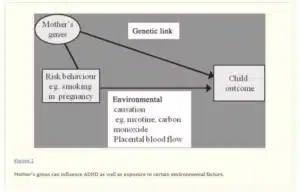Hyperbaric oxygen therapy for Alzheimer’s disease affects millions of individuals worldwide, causing cognitive decline and a range of debilitating symptoms. In the quest for effective treatments, various therapeutic modalities have been explored, including hyperbaric oxygen therapy (HBOT). This case report explores the potential of HBOT as an intervention for Alzheimer’s dementia, with the added dimension of positron emission tomography (PET) imaging to shed light on its impact.
A 58-year-old female was diagnosed with Alzheimer’s dementia (AD) which was rapidly progressive in the 8 months prior to initiation of hyperbaric oxygen therapy (HBOT). 18Fluorodeoxyglucose (18FDG) positron emission tomography (PET) brain imaging demonstrated global and typical metabolic deficits in AD (posterior temporal-parietal watershed and cingulate areas). An 8-week course of HBOT reversed the patient’s symptomatic decline. Repeat PET imaging demonstrated a corresponding 6.5-38% regional and global increase in brain metabolism, including increased metabolism in the typical AD diagnostic areas of the brain. Continued HBOT in conjunction with standard pharmacotherapy maintained the patient’s symptomatic level of function over an ensuing 22 months. This is the first reported case of simultaneous HBOT-induced symptomatic and 18FDG PET documented improvement of brain metabolism in AD and suggests an effect on global pathology in AD.
FAQs for Hyperbaric oxygen therapy for Alzheimer’s
Q1: What is Alzheimer’s dementia, and why is it challenging to treat?
A1: Alzheimer’s dementia is a chronic brain disorder characterized by memory loss, cognitive decline, and behavioral changes. It is challenging to treat due to the complex, progressive nature of the disease, and the lack of definitive cures or treatments to halt its progression.
Q2: What is hyperbaric oxygen therapy (HBOT)?
A2: HBOT involves breathing pure oxygen in a pressurized chamber, typically at higher-than-normal atmospheric pressure. It aims to increase the oxygen supply to tissues, potentially promoting healing and improving various medical conditions.
Q3: How does HBOT work in the context of Alzheimer’s dementia?
A3: While the exact mechanisms are not fully understood, HBOT may enhance oxygen supply to brain tissues, reduce inflammation, and potentially support neuroplasticity. This case report explores the potential of HBOT as a therapeutic intervention for Alzheimer’s dementia.
Q4: What is positron emission tomography (PET) imaging, and how does it relate to this case report?
A4: PET imaging is a medical imaging technique that allows the visualization of metabolic processes in the body. In the context of this case report, PET imaging is used to monitor changes in brain metabolism and activity associated with Alzheimer’s dementia before and after HBOT treatment.
Kesimpulan
In conclusion, the case report utilizing hyperbaric oxygen therapy (HBOT) for Alzheimer’s dementia, coupled with positron emission tomography (PET) imaging, offers a glimmer of hope in the realm of neurodegenerative diseases. While this single case study shows promising results, it underscores the need for larger-scale, controlled clinical trials to substantiate HBOT’s efficacy. The observed improvements in cognitive function and PET imaging outcomes are encouraging, suggesting that HBOT may influence cerebral metabolism positively. Nevertheless, more research is crucial to validate these findings, establish safety parameters, and refine treatment protocols for Alzheimer’s patients seeking potential relief through HBOT.




